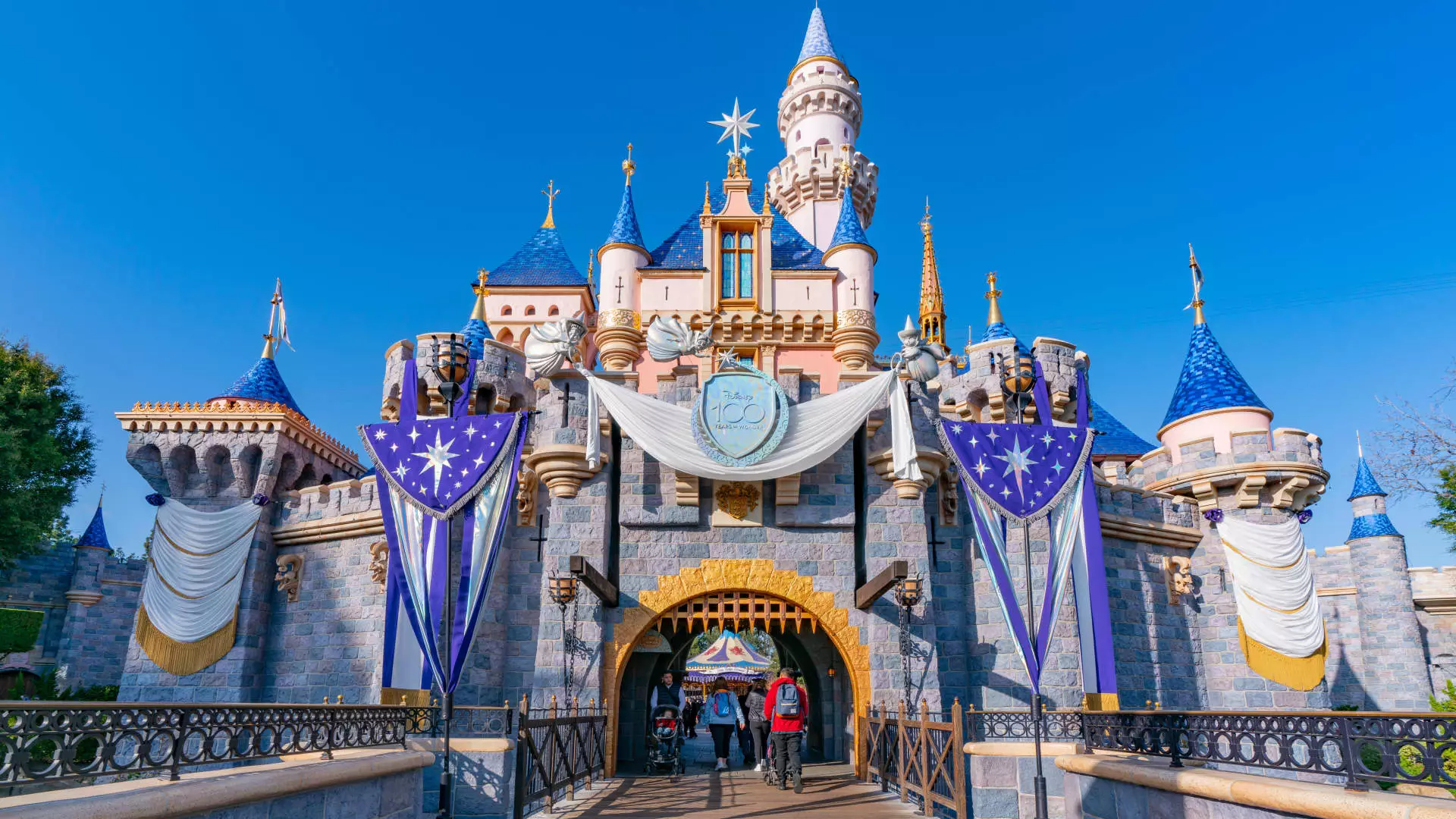Disneyland, a cherished destination for families and tourists alike, has become the focal point of consumer scrutiny once more as it announces upcoming price hikes on its tickets and annual passes. While the entry-level ticket price has remained stagnant at $104 for six consecutive years, other ticket tiers are set to experience significant price increases. These adjustments, which range from $7 to $12 per ticket—an increase of 5.9% to 6.5%—are emblematic of the company’s demand-based pricing model. As the landscape of consumer sentiment shifts towards budget concerns, the financial decisions at Disneyland become critical to analyze.
Disney’s latest ticket price adjustments are not merely arbitrary; they are calculated outcomes of a demand-driven pricing strategy that mirrors common practices in various sectors, including airlines and hotels. The theme park revenue model hinges on peak attendance periods—such as major holidays and school vacations—prompting them to raise prices accordingly. As such, Disneyland has segmented its pricing into tiers, with the highest demand, referred to as Tier 6, demanding a whopping $206 per ticket. This structured approach allows Disneyland to optimize revenue during high-demand times while still offering some affordability during less popular periods.
While Disneyland’s pricing tiers aim to cater to various consumer needs, they also highlight a troubling trend. Increasing prices may alienate certain customer demographics, particularly families who might find the costs prohibitive. The juxtaposition of maintaining an entry-level price while hiking costs elsewhere raises important questions about accessibility and the overall experience of Disneyland.
Annual Pass Hikes: A Closer Examination
The company’s Magic Key annual passes have also seen considerable increases. The lowest tier—termed “Imagine”—will now cost subscribers $599, reflecting a $100 increase. Other tiers, like “Enchant,” “Believe,” and “Inspire,” will also see similar price hikes, with increments ranging from $100 to $125. This particular adjustment indicates not only a response to increased operational costs but also a strategy to enhance exclusivity among annual pass holders.
Annual passes, touted as a passport for unlimited fun, increasingly feel less accessible as their costs climb. Annual pass holders do receive some perks, including early access to attractions and discounts, yet the question remains: is the value still there as the financial barrier rises? The tension between heightened operational costs and ensuring consumer loyalty becomes apparent, and an ongoing balancing act for Disneyland to maintain in order to foster a loyal customer base.
Interestingly, alongside the price hikes, Disneyland has introduced various promotional offers aimed at enticing families to visit. For instance, the announcement of a $50 kid’s ticket, available starting January, seeks to attract younger visitors during less busy periods. Additionally, discounts of up to 20% on hotels further indicate the park’s efforts to alleviate financial burdens for guests.
These promotions exist in stark contrast to the rising ticket prices, creating a narrative that attempts to soften the blow of increased costs. Yet it leaves consumers pondering whether Disneyland is genuinely trying to enhance accessibility or simply leveraging marketing strategies to retain visitor numbers amidst growing affordability issues.
As Disneyland navigates this complex pricing landscape, it faces the dual challenges of optimizing revenue while adhering to public sentiment. Consumers are adamant about value, and with increasing scrutiny, Disneyland must prove that these price hikes correlate with tangible enhancements in the guest experience. The balancing act lies in maintaining the magical allure of the park despite its growing expenses.
In the larger context, Disneyland operates in a competitive theme park industry, where consumer preferences and expectations continually evolve. The ongoing dialogue about Disneyland’s pricing strategy not only sheds light on its business practices but also reflects broader trends in entertainment and hospitality that may redefine how families approach popular attractions.
Disneyland’s recent ticket price increases and annual pass adjustments are indicative of a broader trend toward demand-based pricing in the theme park industry. Faced with scrutiny from cost-conscious consumers, the park must continuously find ways to justify its pricing while offering enticing promotions that enhance value. As Disneyland navigates this intricate landscape, both the company and its guests must engage in a conversation about what the future of affordable, enjoyable family entertainment looks like in a rapidly changing world.

Leave a Reply